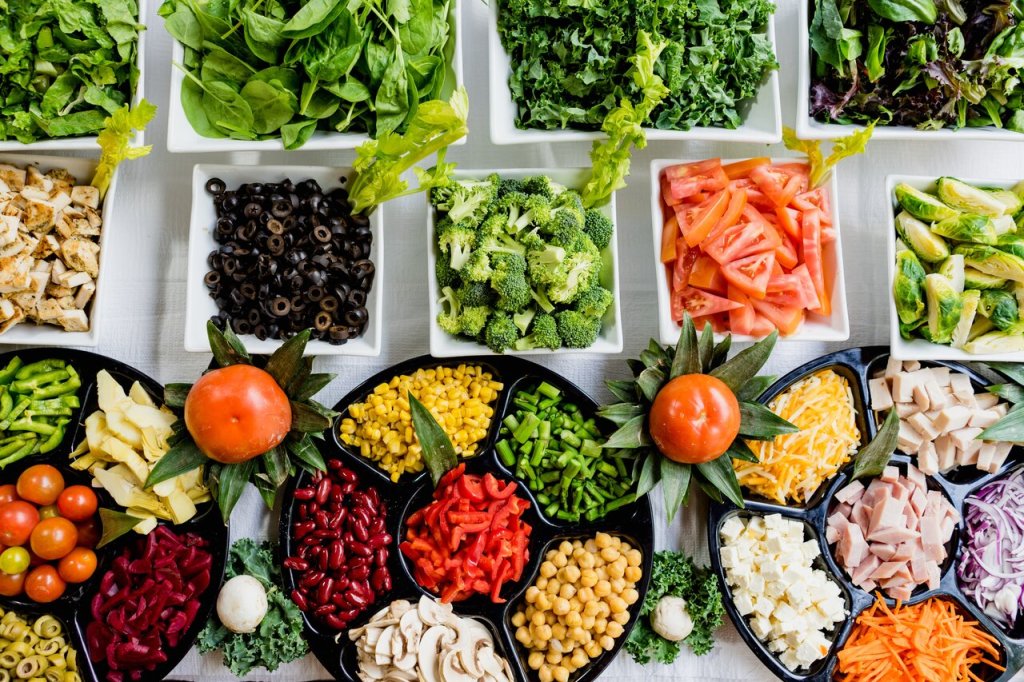The State of Fresh in 2025
For years, there has been a growing trend toward fresh, locally sourced, and organic foods. As consumers became more aware of the impact of their food choices on their health and the environment, they took a more critical eye to their shopping. The pandemic only served to increase the pace of this trend as health took center stage for millions of Americans. Though inflation certainly slowed this trend, it’s far from over and looks to continue to grow through 2025 and beyond.
Advancements in food preservation technologies are also making an impact. High-pressure processing and modified atmosphere packaging have enabled fresh foods to have a longer shelf life while maintaining their nutritional quality and freshness. These technologies may continue to improve and become more widespread, allowing for even greater access to fresh foods.
Overall, the state of fresh food in 2025 will likely depend on various trends, including shifting consumer preferences, inflationary pressures, and shifts within subcategories.
4 Key Market Trends in Fresh Food
Since the fresh market includes so many diverse product types, it can be difficult to determine which trends are important to your brand. However, a few major trends are impacting the fresh category that all brands should keep an eye on.
With that in mind, here are 4 fresh food trends you need to be aware of as you continue building your growth plan:
1. Inflation and Price Sensitivity
Inflation continues to play a significant role in shaping the fresh food market, with rising prices altering how consumers approach their grocery purchases. Many households are prioritizing essentials, often scaling back on premium items or purchasing in smaller quantities to stay within budget. unfortunately, Food departments are fueling recent price increases, with Meat (+11%) and Dairy (+7%) leading the way.1 This price sensitivity is driving a surge in demand for value-oriented options, such as private-label products and bulk purchasing, as consumers look for ways to stretch their dollars without compromising on essentials.
However, fresh food remains a key priority for many consumers, especially those who view it as integral to health and wellness. As a result, shoppers are making deliberate trade-offs between quality and affordability. Some are willing to pay a premium for organic or locally sourced produce, while others are opting for conventionally grown items or smaller portions to manage costs. Brands and retailers that strike the right balance between price and perceived value—whether through promotions, tiered product offerings, or messaging around quality—are better positioned to capture the loyalty of health-focused consumers in 2025 and beyond.

Mid-Year Consumer Outlook: Guide to 2025
Future-focused insights into consumer spending and growth opportunities.
2. Sustainability in Fresh Food
One thing is clear, consumers care about sustainability, and they’re backing it up with their wallets. In fact, 92% of consumers say that sustainability is important when choosing a brand today.2 In the grocery store, products with claims like “organic” are more popular than ever, while new and emerging claims around regenerative agriculture, carbon footprint, water footprint, and responsibly sourced are emerging and growing rapidly.
This trend can be very beneficial for fresh food brands, especially those that source their products locally, sustainably, or responsibly. Still, if you want consumers to find you, you need to do a good job of marketing your products around these topics. Make sure to leverage sustainability attributes on your packaging or in the product descriptions to highlight your alignment with sustainable practices and meet shifting consumer needs.
3. Health & Wellness Priorities
Health and wellness continue to be powerful drivers of fresh food purchases, with consumers prioritizing options that align with their desire for healthier lifestyles. Fresh produce remains a cornerstone of this trend, as shoppers increasingly seek out fruits (+4% YoY), vegetables (+1.2%), and minimally processed foods to support their nutritional goals.3 Organic and clean-label options are also gaining traction, with consumers willing to pay a premium for products that promise transparency, fewer additives, and sustainable farming practices. This shift highlights an opportunity for brands and retailers to emphasize the health benefits of fresh offerings while incorporating messaging around quality and authenticity.
This shift is further propelled by the growing use of GLP-1 medications by consumers. Originally developed to manage diabetes, these medications are increasingly being used for weight loss, with 36% of users seeking its appetite-suppressing benefits.4 Many of these users are pairing their usage with a healthier diet, helping fresh and organic foods. Fresh food brands can particularly benefit from this trend, especially when aligned to plant-based diets or when their offerings are “organic,” one of the most desired product attributes.
4. Slower Online Growth
Though 86% of US CPG dollar sales are represented by “omnichannel shoppers,” fresh food and perishables have not made much progress in gaining traction online. For example, the total U.S. fruit market saw more than $50 billion in sales in the past year, but only $4.5 billion of that occurred online.3 This shows that consumers are still choosing to shop for fresh products in-store or through click-and-collect. This may be due to convenience or a general wariness for online shopping in the fresh food space.
Still, NIQ’s omni data also shows that more food dollars are being spent in-store than online. Notably, within the U.S., 21% of online CPG food is being purchased on Amazon.com. If online is an avenue you want to build on, you’ll need to understand the ways consumers shop online and the difficulties that you may need to overcome. Shipping issues for fresh food are less common than they used to be, but many consumers are still wary. Education is key to building an online foothold for many fresh brands.
How to Leverage Fresh Food Trends
Once you have a better view of the different trends impacting your brand and growth, you need to know how to act on this information to meet evolving shopper needs. Most importantly, you need to understand the pressures your target consumers are facing. With rising costs in nearly every aspect of their life, they’re stretching their wallets more than ever. This doesn’t mean you need to drop your prices, but you do need to be aware of how consumers are shifting to save. This will let you better align your messaging, promotions, and general positioning to meet shifting demand.
Additionally, leveraging wellness and sustainability trends will be even more valuable going forward. Health continues to be increasingly important to all consumers. For those consumers who are more proactive with their health, the top reasons are to live a longer, healthier life, avoid preventable diseases, and protect against ailments. Speaking directly about how your products relate to these needs can be a major boon for your future growth.

Get the Full View and Keep Your Sales Fresh
Leveraging the most important fresh food trends requires understanding customer behaviors, sales trends, growth opportunities, and future demand. Which is a lot to ask if you don’t have access to accurate data and valuable insights. The experts at NIQ are here to help.
No matter your size or state of growth, NIQ provides the Full View of the market at a price that fits your budget. For emerging brands, Byzzer™ by NielsenIQ provides access to the essential data they need to successfully react to these shifting tides and build growth strategies.
Talk to our experts about new options custom-built for emerging and rising brands alike.
Don’t miss out on the market’s best data and expert insights to help you keep brand growth strong in 2025 and beyond!
Sources:
1 NielsenIQ, Total US xAOC, 4 weeks ending November 23, 2024. Vol = Units
2 NIQ Report – The Green Divide
3 NIQ Total U.S. xAOC Latest 52 Weeks Period Ending Oct. 26, 2024
4 NielsenIQ, Homescan GLP-1 Panel Survey; Total US; Total Outlets; All Departments, % of Buying Households, Latest 52 weeks ending January 2024




